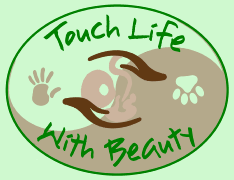Alan Howell Essential Oils
Shechina
21, Chatsworth Crescent
HOUNSLOW
Middlesex
England
TW3 2PE
Telephone:
0208 569 8440
Facsimile:
0208 569 8440
0845 458 5757
0845 458 5757
Telephone and Facsimile
International:
+4420 8569 8440:
Touch Life With Beauty


Shechina
Essential Oils
By Alan Howell
CAPE CHAMOMILE OIL MONOGRAPH
Eriocephalus punctulatus
Asteraceae
INTRODUCTION
Eriocephalus punctulatus (Asteraceae) is a particularly fragrant, though rare, aromatic shrub endemic to remote mountain areas in South Africa. It is used traditionally for both medicinal purposes and the fumigation of dwellings during cultural rituals. A limited quantity of E. punctulatus oil was produced and marketed during the early 1970's, and was enthusiastically accepted by the perfumery trade. Unfortunately it was found the wild crafted material failed to regenerate after severe defoliation, and the project was abandoned. Research by GNP has resulted in the development of clonal material having a unique chemical and organoleptic qualities. This has resulted in the establishment of commercial plantations and the development of sustainable harvesting systems.
E. punctulatus is a bushy shrub which grows up to a metre in height. The simple needle-
DISTRIBUTION: E. punctulatus is found in the mountainous areas of the eastern Free State Province, South Africa.
EXTRACTION: Essential oil by steam distillation of stem and leaves. The oil is extracted from a cultivated selected clone.
DESCRIPTION OF THE OIL
The oil is distinctive for its striking deep blue colour. It has a fine fruity fragrance,
with roman chamomile-
MAIN CHEMICAL COMPONENTS
The oil is largely composed of fragrant esters, most significantly; 2-
FLAVOURS: Cape Chamomile oil has a very low taste threshold value and appears to have great potential as a flavour enhancer. It can be used in the same role as that of Roman chamomile.
FRAGRANCES: Cape Chamomile can be used extensively in high-
COSMETICS: Cape chamomile has excellent cosmetic properties which include it’s anti-
TRADITIONAL USES: The leaves are used in baths for its relaxing and invigorating scent. Used in pillows, the scent encourages pleasant dreams. The fumes of the burning fresh plant are used to disinfect the house and clear evil sprits after a death has occurred.
AROMATHERAPY
PROPERTIES: Analgesic, anti-
USES: Allergies, boils, colitis, cystitis, depression, dermatitis, diarrhoea, earache, eczema, fevers, indigestion, inflammation, insomnia, irritability, menopause, neuralgia, period pains, rheumatism, teething pains, toothache, urticaria, vaginitis.
CONTRA-
BLENDS: Bergamot, benzoin, cedarwood, frankincense, fennel, geranium, ginger, lemon,
mandarin, palmarosa, sandalwood, sweet orange, vetivert, ylang-
GENERAL USES: Mental and Emotional. To instil a positive sense of well being, helps
to overcome depression. Used as an aid in combatting stress related ailments, thereby
improving the quality of sleep. Particularly helpful for the over-
Physical. Anti-
Information from the USA is that Cape Chamomile oil can assist in the treatment of
depression. It also has potential for the treatment of stress related ailments, especially
for improving sleep patterns. This is due to the presence of linalyl acetate which
is the major component of lavender oil. The azulene component of the oil would provide
anti-

| Homoeopathy under threat |
| Essential Oils |
| Carrier Oils |
| Blended Oils |
| Other Oils |
| Essential Oils A - D |
| Essential Oils E - L |
| Essential Oils M - P |
| Essential Oils R - Z |
| Feng Shui Blends |
| Creams & Lotions Ingredients |
| Base Cream Recipe |
| Soap Ingredients |
| Therapists Metal Carry Case |
| 24 Bottle Boxes |
| Bottle & Jar Illustrations |
| Monograph Index |
| Argan Oil Page II |
| Reverend Shianna |
| Page 64 |
| Free Website Listings |
| Alan Howell |
| Alan Howell CV 1 |
| Alan Howell CV 2 |
| Alan Howell CV 3 |